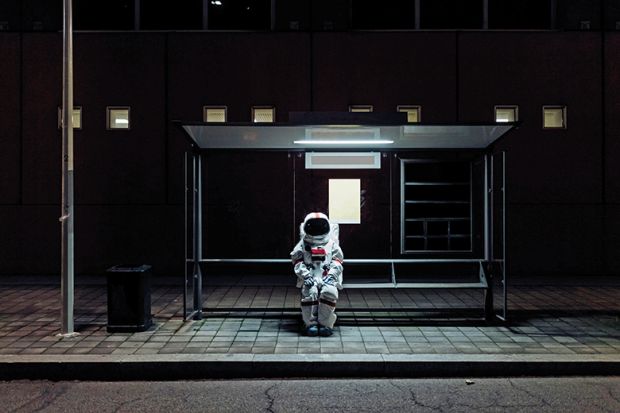One of the biggest and most fundamental controversies in modern astronomy is the question of how fast the universe is expanding. In the subject’s most popular textbook for US college students, the dispute is not even mentioned.
One reason, explained Eric Chaisson, a long-time professor of astrophysics at Harvard University and co-author of the book, Astronomy Today, is simple: Astronomy Today already runs to more than 800 pages in its ninth edition, and spelling out debates about the universe’s expansion “would take even more space”, he said.
The more complicated factors, Professor Chaisson acknowledged, involve politics and sales. Textbooks are chosen by academics who teach the subject, and they have a range of personal and professional reasons for not wanting to move too fast or explain too much, he said.
“It is very hard to get new stuff into textbooks,” said the semi-retired Ivy League instructor.
That kind of dilemma, however, stands to get significant new attention, from scientists and civilians alike, as advanced technologies – in particular the year-old James Webb Space Telescope – are promising a closer look at key secrets of the universe and its formation.
Among the top problems that the $10 billion (£8 billion) infrared-detecting Webb telescope aims to tackle is the true value of the Hubble constant – the speed at which the universe is expanding from its formation in the Big Bang. That figure is intertwined with numerous other prime puzzles of cosmology, including the age of the universe, the nature of its contents and its likely future.
“That’s, I think, in my head, the single most important controversy that could ultimately force us to rewrite the Big Bang scenario,” Professor Chaisson said of the momentous mystery that his best-selling textbook does not address.
As data from the Webb telescope bearing on the Hubble constant are accumulated and processed, the anticipation is playing out in both academic journals and the popular press. One of the participants, Marcelo Gleiser, professor of physics and astronomy at Dartmouth College, co-authored a newspaper commentary saying that the data are becoming so “alarmingly inconsistent” with current theories about the nature of the universe as to challenge commonly held assumptions in the sciences and beyond.
“Any scientific revolution of the sort we’re imagining would presumably have comparable reverberations in our understanding of ourselves,” write Professor Gleiser and his co-author, Adam Frank, professor of astrophysics at the University of Rochester.
Yet despite that potentially profound reorientation, Professor Gleiser said, there is no clear pathway for getting such a foundational concept in front of university students.
Professor Gleiser said he has been giving interviews, posting on social media and writing articles to try to alert people to the significance of what the Webb telescope might find. He also just published a book that outlines the controversy in arguing that a greater public focus on the major questions of the universe could raise human respect for the natural world.
Yet winning the attention of academics and their students is another matter, he said. “There is no kind of office that this goes through,” he said.
Professor Chaisson said he sympathised but has had difficulties revising his own textbook. Astronomy Today is published by Pearson, and the company has a history, he said, of updating the textbook every three years by consulting a panel of experts – typically academics who use the book in their classes.
For the publisher, he said, that approach has the considerable advantage of ensuring loyal customers. For the book’s content, however, it can mean adding ideas of marginal value that reflect the narrow expertise of the participating faculty, while excluding material of greater weight that lies outside their fields.
The result of such a process is that some key scientific realisations – such as the existence of a supermassive black hole at the centre of the Milky Way, and the fact that Pluto is not a planet – took decades to win inclusion in university textbooks, Professor Chaisson said.
Pluto was an especially instructive moment. Professor Chaisson was among many who had long contended that it was “just a large rock”, its dubious planetary status aided by the fact that it was the only one of the nine to have been discovered by an American. In a rare act of political-scientific consensus, the International Astronomical Union eventually voted in 2006 that Pluto did not qualify as a planet, upsetting legions of fans within the worlds of both science and popular culture.
Professor Chaisson recalled being at a dinner a full decade earlier, with five other authors of leading astronomy textbooks, where they contemplated making the downgrade decision on their own. But, he said, “Everybody was too frightened about doing this.”
After the 2006 vote, he said he laughed at a journalist asking if the decision could have economic implications – until he returned to his office at Harvard and found that Pearson representatives were calling from London to tell him that they faced large losses from the need to destroy a warehouse-sized pile of his textbooks.
As for the Hubble constant, measurements from the early universe suggest a figure of about 67km per second per megaparsec. Observations of nearby stars in the modern universe put the number at about 74. Astronomy Today simply tells college students that the figure is 70.
“So we’re merging the two particular views without identifying that controversy,” Professor Chaisson said.
Register to continue
Why register?
- Registration is free and only takes a moment
- Once registered, you can read 3 articles a month
- Sign up for our newsletter
Subscribe
Or subscribe for unlimited access to:
- Unlimited access to news, views, insights & reviews
- Digital editions
- Digital access to THE’s university and college rankings analysis
Already registered or a current subscriber? Login








